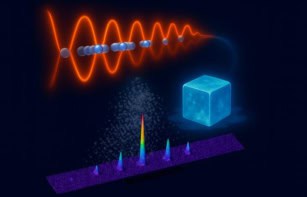Matin Durrani reviews Elementary: the Periodic Table Explained by James M Russell

To mark 2019 being the International Year of the Periodic Table, members of the Physics World team have been having some chemical “fun” in our self-styled Battle of the Elements. It involved staff picking their favourite element and arguing the case in a series of blog posts and podcasts (check out the Physics World Weekly podcast of 11 July). I picked uranium because it was the element that led to the discovery of three crucial physics phenomena: radioactivity, isotopes and fission. And as I was reminded when reading Elementary: the Periodic Table Explained by James M Russell, uranium is also responsible for much of the heat inside planets.
Timed to coincide with the 150th anniversary of Dmitri Mendeleev’s creation of the periodic table, the book offers readers a potted account of all 118 known elements, from old favourites such as silicon and iron to rarer stuff like tellurium (vital for solar panels) and ruthenium (found on the nibs of the famous Parker 51 fountain pen no less). That’s a lot of elements to get through, and Russell – a science writer – has had to be selective, with most getting just two pages apiece. Neatly packaged with a pretty chequerboard cover, the book will be perfect for friends and family members who aren’t scientists and simply want a short, sweet overview of each element, from actinium to zinc.
Carbon, the winner of the Physics World Battle of the Elements, naturally gets its place too. It’s vital for life and has a clear physics angle through diamonds and graphene – that wonder material first properly isolated by physicists in 2004. However, I was disappointed that elements heavier than uranium, which don’t occur naturally, get barely a paragraph each. That seems an injustice for physicists, who’ve led the way in creating these fleeting entities in nuclear-physics labs around the world. Also given scant treatment are the “lanthanides” – those misfits that sit in two rows stuck below the main part of the periodic table. Indeed, Russell doesn’t really “explain” why they’re placed there at all. But then maybe there is no explanation – after all, to physicists, surely the periodic table is nothing more than a way of putting the elements in some sort of order? As Ernest Rutherford, the physicist who won the 1908 Nobel Prize for Chemistry, famously sniffed: “All science is either physics or stamp-collecting.”
- 2019 Michael O’Mara Books 186pp £9.99hb



